The Inca Empire Was Powerful And Well-Organized – Why Were They So Successful?
A. Sutherland - AncientPages.com - The Inca state and culture were born with a legend.
The children of the god Inti, Manco Capac and his sister Mama Ocllo wandered from Lake Titicaca to the Cuzco Valley. The mission of civilization was given to them by their father, the sun god. After persuading local Indians to worship the sun, they taught them animal husbandry, house building, fieldwork, and various other crafts.
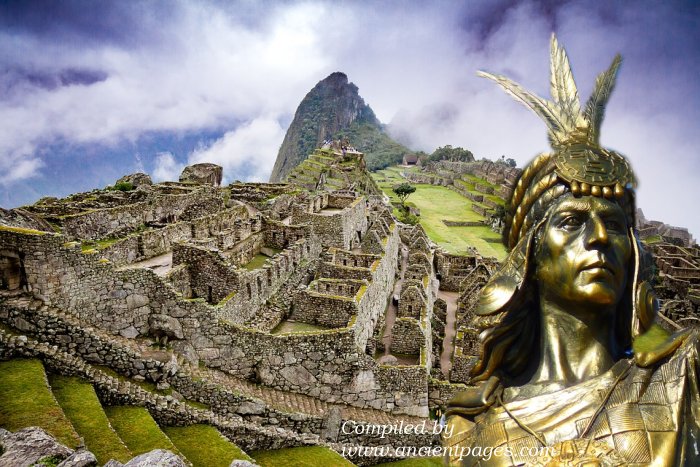
Pachacuti (Pachakutiq Inka Yupanki) established the Inca Empire after defeating the Chanca people, an indigenous group who lived in the Andes from the 10th to 14th centuries.
In 1438, the Chanca were attacking the Inca capital Cuzco and threatened to take it.
Another colorful legend says that at the crucial moment on the battle with the Chanca tribe, the stones in the battlefield turned temporarily into warriors and effectively helped Pachacuti’s forces to destroy the enemy. Later, the rocks were gathered and placed in shrines for future worship.
Pachacuti, the ninth Sapa Inca (1418–1471/1472), defeated the Chanca and made the Inca Empire powerful during his reign.
The year 1438 is considered the birth of the Inca Empire (in Quechua: 'Tawantinsuyu'), and Pachacuti earned him the title 'Transformer of the World' and 'Earthshaker.'
He was a very ambitious man, as can be seen from the areas he conquered. He rebuilt Cuzco and the great temple of the sun in the city after the battle with the Chanca. Cuzco became the political, administrative, and military center of the Inca Empire.
Pachacuti also developed the Inca state, organized the institutions, and introduced systems of tribute and taxation and tribute, which were paid by conquered peoples in the form of goods or labor. The next step was to build an extensive road network to connect towns, villages, and sites of worship. The roadways important for the well-functioning state, but it was not easy to build them in a mountainous country like Peru.

Keshwa Chaca - Suspension Rope Bridge. source
Pachacuti contributed with an effective imperial communication network and extensive warehousing of food and other commodities indispensable for redistribution throughout the Empire.
The Incan massive road system emanated from Cuzco to connect the four regions of the country. These roads were a wonder of engineering and included nearly 40,000 kilometers (25,000 miles) of connected roadways.
Tahuantinsuyu (means "The Four Regions Together”) developed rapidly during the reign of Pachacuti. With the cult of the sun in mind and heart, the Inca troops, loyal to the Cuzco rulers, conquered other tribes from present-day northern Ecuador, central Chile, south-central Bolivia, northwest Argentina, and from the coasts of the Pacific Ocean to the Amazon jungle.
The assimilation of these tribes was not always easy, and from 1438 to 1533, the Incas used many different methods, including conquest and peaceful assimilation, to incorporate the tribes into the Empire.
Assimilated artisans and skilled builders constructed new buildings, suspension bridges, roads, and terraces for agriculture in the conquered areas. In this way, they made a daily contribution to the power of the Inca state. The worship of the ancient Incan sun god, Inti, was imposed by Pachacuti, and Quechua became the unified language for the people who began to believe their rulers to be descendants of the sun god and learned to live under their unquestioned authority.
There was almost no crime in the Inca empire. The Inca laws were severe and punishment was harsh. Any kind of law transgression was considered an action against divinities and for the cursing of gods, people were often executed. If they were caught stealing, they would have their hands cut off.
There was no system of imprisonment and offenders were punished so that the penalty was exemplary to the rest of the population.
Historians often comment on the Inka’s exceptionally organizational skill in their country.
The scholar Lewis Hanke, a preeminent U.S. historian of colonial Latin America, who is best known for his writings on the Spanish conquest of Latin America, wrote that
“In everything from the most important to the most trifling, there was order and methodical arrangement,” wrote ……“ Men had honorable and useful occupations…lands, mines, pastures, hunting lands, woods, and all kinds of employments were so managed that each person knew and held his own state.”

Machu Picchu, Peru - rpbmedia - Adobe Stock
“In each district of the four in which they divided their Empire, the Inka had councils of war, justice, treasury. Each of these councils had their ministries and ministers and subordinates from major to minor...from decurions that handled ten to others who handled hundreds, thousands, and tens of thousands. From grade to grade, these levels gave a count of everything there was in the Empire to the supreme councils…”.
The territory of the Inca Empire was divided into three parts: the Lands of the Inca, the Lands of the Inti and other gods, and the Lands of the local families, all roads across the Empire led to Cusco. The roads ‘go from Quito to Chile, and into the forests of the Andes. Although the Inca did not complete all, suffice it that he made a great part of the roads, which were finished by his sons and grandsons.’ 1
At the height of its power between 1470 and 1532, the Inca Empire was inhabited by ten million people.
Written by – A. Sutherland - AncientPages.com Senior Staff Writer
Copyright © AncientPages.com All rights reserved. This material may not be published, broadcast, rewritten or redistributed in whole or part without the express written permission of AncientPages.com
Expand for referencesReferences:
de Gamboa, Pedro Sarmiento. History of the Incas
Ostler N. Empires of the Word
Ramiro Matos, Jose Barreiro, The Great Inka Road: Engineering an Empire
- Hanke L. History of Latin American Civilization Vol.1
More From Ancient Pages
-
 Ancient DNA Reveals Surprising Stories About Migrations And Genetic Mixing Of Our Ancestors
Archaeology | Feb 22, 2018
Ancient DNA Reveals Surprising Stories About Migrations And Genetic Mixing Of Our Ancestors
Archaeology | Feb 22, 2018 -
 Ceibal Is The Oldest Known Ceremonial Site Of The Maya Civilization
Ancient History Facts | Oct 1, 2016
Ceibal Is The Oldest Known Ceremonial Site Of The Maya Civilization
Ancient History Facts | Oct 1, 2016 -
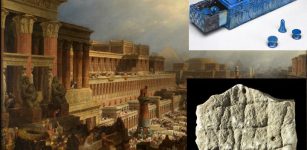 4,500-Year-Old Board Games And Game Pieces Unearthed At Gath
Archaeology | Jun 19, 2022
4,500-Year-Old Board Games And Game Pieces Unearthed At Gath
Archaeology | Jun 19, 2022 -
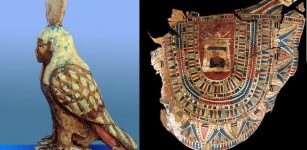 Graeco-Roman Era Rock-Cut Tomb Unearthed In Aswan West Bank, Upper Egypt
Archaeology | Apr 24, 2019
Graeco-Roman Era Rock-Cut Tomb Unearthed In Aswan West Bank, Upper Egypt
Archaeology | Apr 24, 2019 -
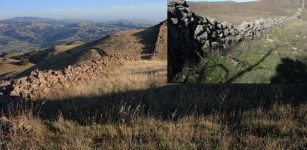 Mystery Of Great Wall Of California: An Ancient Unsolved Enigma
Civilizations | Sep 11, 2018
Mystery Of Great Wall Of California: An Ancient Unsolved Enigma
Civilizations | Sep 11, 2018 -
 World’s Oldest Wine Found In 2,000-Year-Old Roman Tomb In Carmona, Spain
Archaeology | Jun 19, 2024
World’s Oldest Wine Found In 2,000-Year-Old Roman Tomb In Carmona, Spain
Archaeology | Jun 19, 2024 -
 Bizarre Ancient Capuchin Crypt ‘Decorated’ With The Bones Of 4,000 Monks
Ancient Traditions And Customs | Nov 22, 2018
Bizarre Ancient Capuchin Crypt ‘Decorated’ With The Bones Of 4,000 Monks
Ancient Traditions And Customs | Nov 22, 2018 -
 Ancient Symbol Hamsa: It’s Meaning And History Explained
Ancient Symbols | May 20, 2020
Ancient Symbol Hamsa: It’s Meaning And History Explained
Ancient Symbols | May 20, 2020 -
 Mysterious Ancient Danube Stone Faces And The Fish Goddess Connection
Ancient Mysteries | Dec 18, 2019
Mysterious Ancient Danube Stone Faces And The Fish Goddess Connection
Ancient Mysteries | Dec 18, 2019 -
 Shangshan Culture Drank Ancient Rice Beer 10,000 Years Ago – Archaeological Evidence Found In China
Archaeology | Dec 13, 2024
Shangshan Culture Drank Ancient Rice Beer 10,000 Years Ago – Archaeological Evidence Found In China
Archaeology | Dec 13, 2024 -
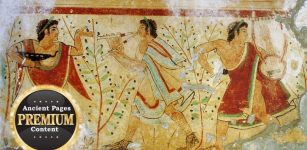 Intriguing Evidence Etruscans May Have Visited Canada
Ancient Mysteries | Sep 30, 2018
Intriguing Evidence Etruscans May Have Visited Canada
Ancient Mysteries | Sep 30, 2018 -
 The Sumerian King Who Received A Divine Tablet With Secrets Of The Gods And Changed History Of Mesopotamia
Ancient Mysteries | May 30, 2021
The Sumerian King Who Received A Divine Tablet With Secrets Of The Gods And Changed History Of Mesopotamia
Ancient Mysteries | May 30, 2021 -
 Controversial Statue Of Anglo-Norman Knight William Marshal In Pembroke Faces Criticism
Artifacts | May 10, 2022
Controversial Statue Of Anglo-Norman Knight William Marshal In Pembroke Faces Criticism
Artifacts | May 10, 2022 -
 Beautiful 2,300-Year-Old Gold Ring Found In The City Of David
Archaeology | May 30, 2024
Beautiful 2,300-Year-Old Gold Ring Found In The City Of David
Archaeology | May 30, 2024 -
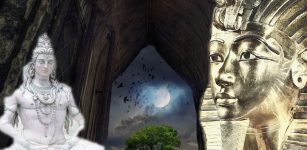 Axis Mundi That Symbolizes Separation Of The Earth From The Heaven
Featured Stories | Jul 2, 2018
Axis Mundi That Symbolizes Separation Of The Earth From The Heaven
Featured Stories | Jul 2, 2018 -
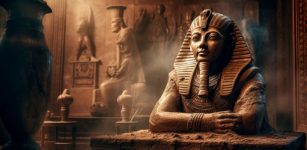 What Did A Day In Pharaoh’ s Life Look Like?
Ancient History Facts | Dec 9, 2019
What Did A Day In Pharaoh’ s Life Look Like?
Ancient History Facts | Dec 9, 2019 -
 8 Billion People: How Different The World Would Look If Neanderthals Had Prevailed
Featured Stories | Nov 18, 2022
8 Billion People: How Different The World Would Look If Neanderthals Had Prevailed
Featured Stories | Nov 18, 2022 -
 Llangernyw Yew: Chilling Prophecy Of The Oldest Tree In Wales
Featured Stories | Oct 28, 2022
Llangernyw Yew: Chilling Prophecy Of The Oldest Tree In Wales
Featured Stories | Oct 28, 2022 -
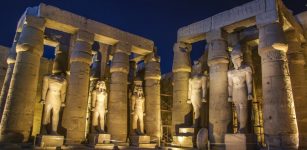 Luxor – Ever-Lasting Legacy Of The Ancient Egyptian Civilization And The Pharaohs
Featured Stories | Mar 29, 2021
Luxor – Ever-Lasting Legacy Of The Ancient Egyptian Civilization And The Pharaohs
Featured Stories | Mar 29, 2021 -
 How Can AI Affect Human Evolution? Predicting Changes In Brain Size And Social Behaviors
Evolution | Nov 22, 2024
How Can AI Affect Human Evolution? Predicting Changes In Brain Size And Social Behaviors
Evolution | Nov 22, 2024
